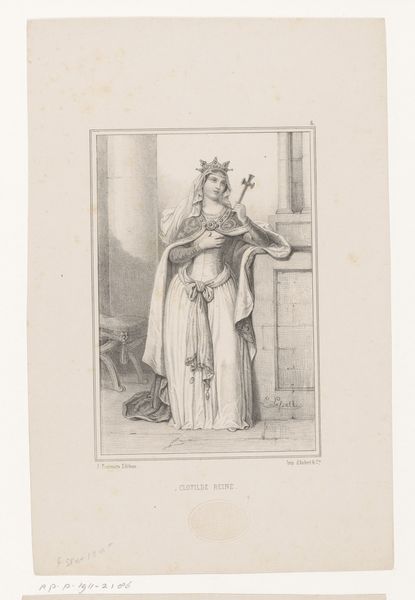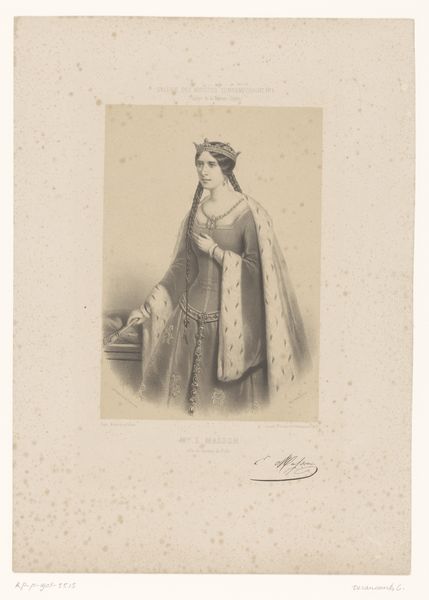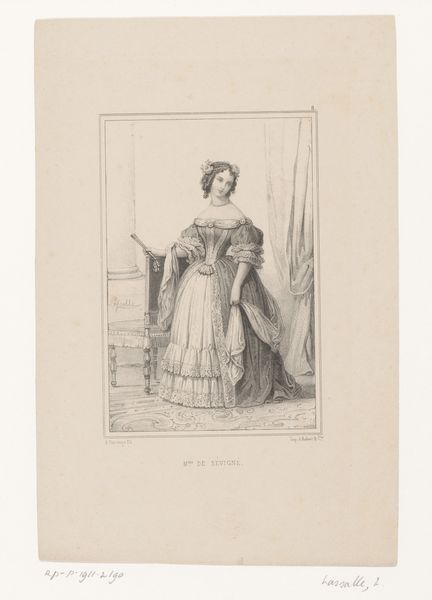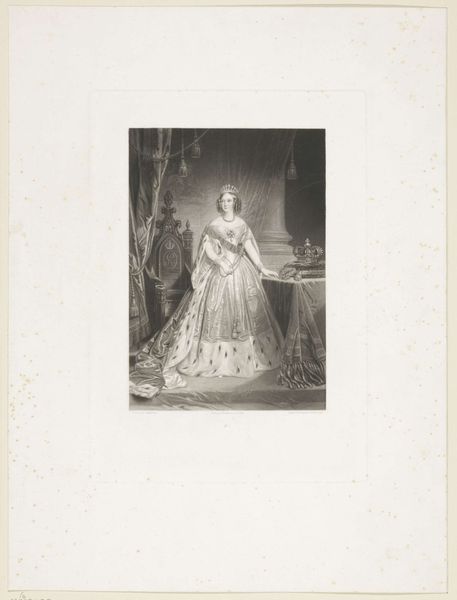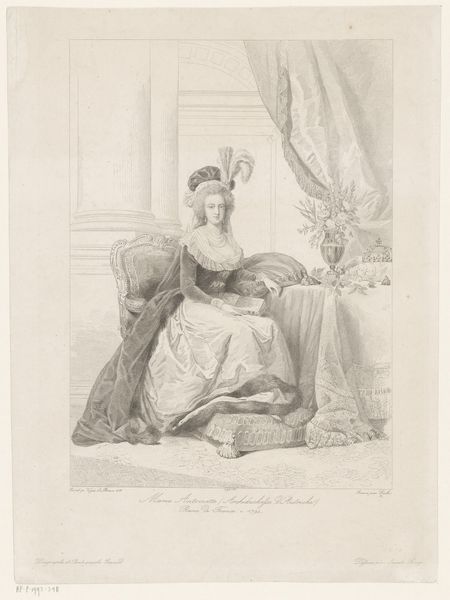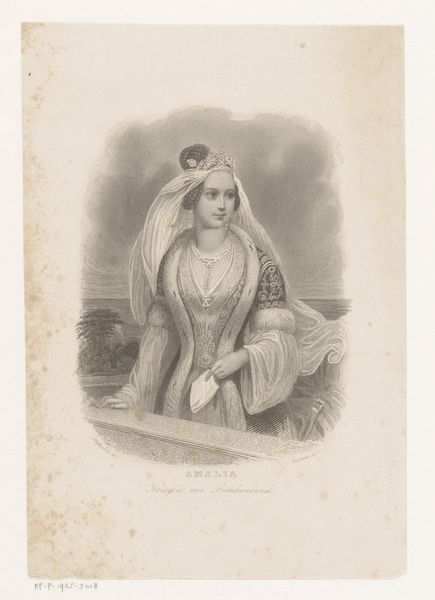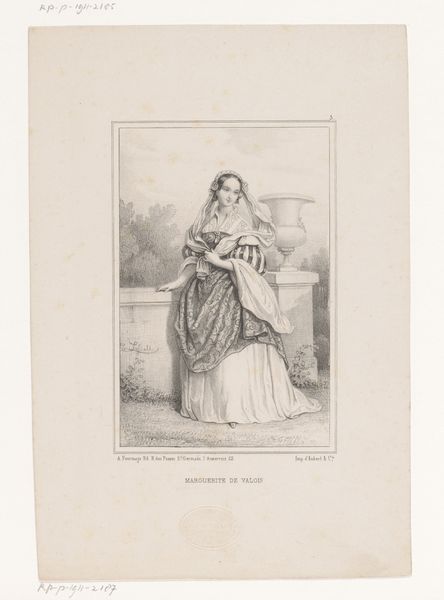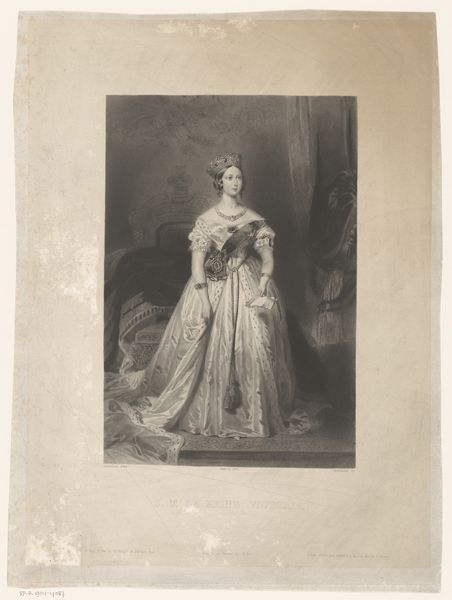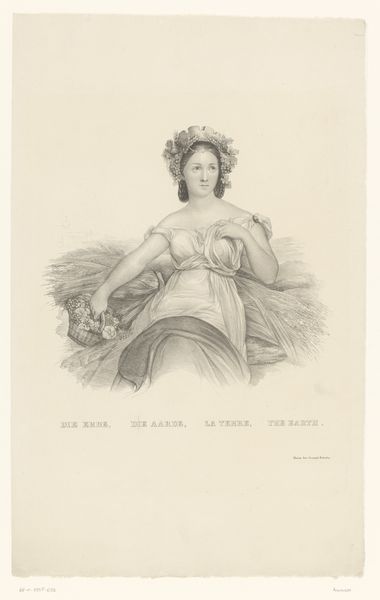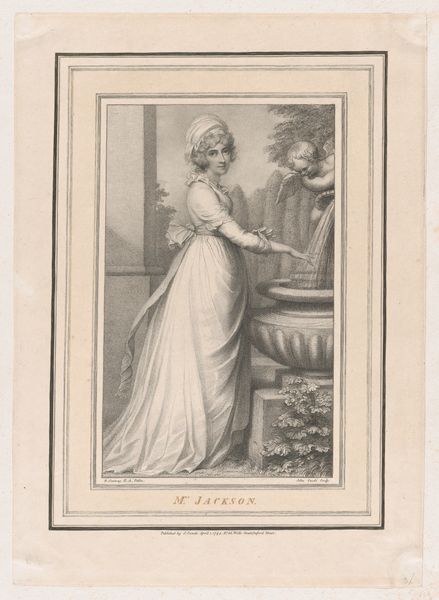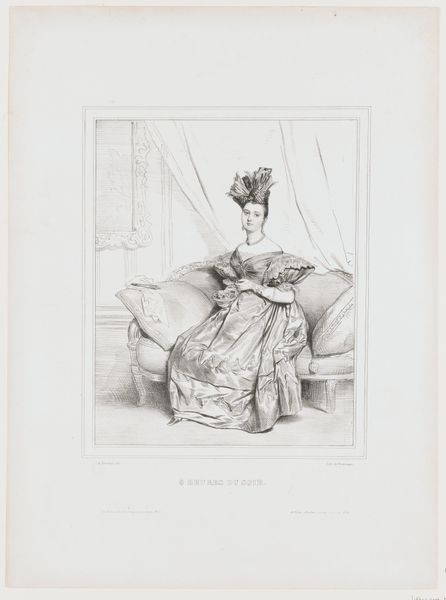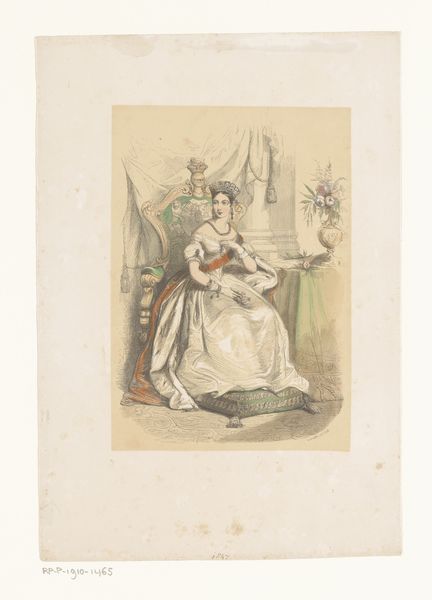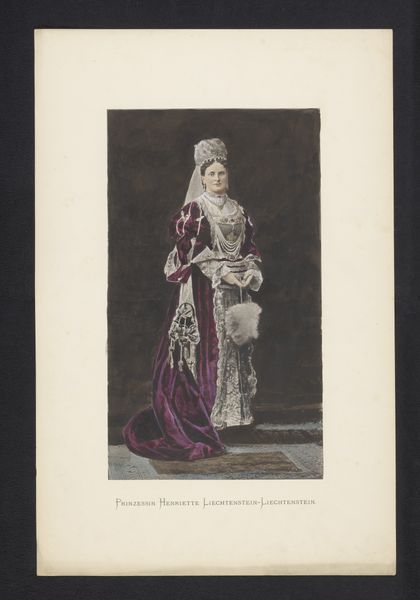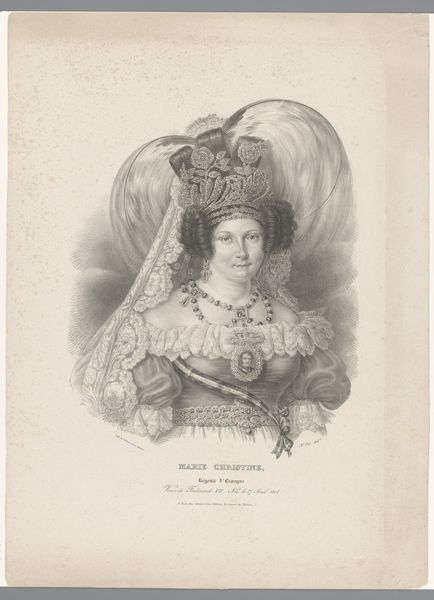
print, engraving
#
portrait
#
pencil drawn
#
aged paper
#
medieval
# print
#
pencil sketch
#
old engraving style
#
history-painting
#
engraving
Dimensions: height 267 mm, width 182 mm
Copyright: Rijks Museum: Open Domain
Curator: Before us we have an engraving from the 1840s after Louis Lassalle, titled "Blanca van Castilië als regentes van Frankrijk," or Blanche of Castile as Regent of France. It's housed right here at the Rijksmuseum. Editor: My first impression is how delicate the image feels. The lines are so fine, it almost floats on the paper. Curator: The delicacy comes from the engraving technique itself, allowing for incredibly detailed linework. It’s not just aesthetically pleasing; it also echoes the historical perception of Blanche as a virtuous and refined ruler during a turbulent time. Editor: I see what you mean. The use of light and shadow is remarkably subtle, and creates volume while highlighting her composed demeanor. Notice how her gown flows—it suggests her royal status through volume, without overwhelming the figure. Curator: Absolutely. This image appeared during a time of renewed interest in medieval history, which artists were often trying to explore in order to convey a romantic nationalist project. It presents a version of French history meant to instill pride and reinforce notions of strong, righteous leadership. Her role as regent, especially as a woman, was pivotal in ensuring stability, and that’s precisely the image this work promotes. Editor: Indeed. Visually, the composition centres our attention firmly on Blanche. Everything else is rendered with less precision. It frames her role in French dynastic succession. Her stance is poised, yet natural, which reflects both authority and grace, if I may be so bold. Curator: The historical context adds another layer. Depicting her with the crown, sceptre, and regal garments signifies the transfer of power and legitimizes her position during Louis IX’s minority. Such imagery, circulating in print form, reinforced the narrative of a capable female leader maintaining the French throne. Editor: Ultimately, despite the print’s seeming simplicity, its success relies on balance. Formal tension makes the content particularly strong. Thank you for that fascinating background! Curator: My pleasure. These historical narratives encoded within artworks invite us to reflect on power dynamics and representation through the ages.
Comments
No comments
Be the first to comment and join the conversation on the ultimate creative platform.
